Personal Safety
Walking On Ice Safety Tips | Winter Survival Safety Tips
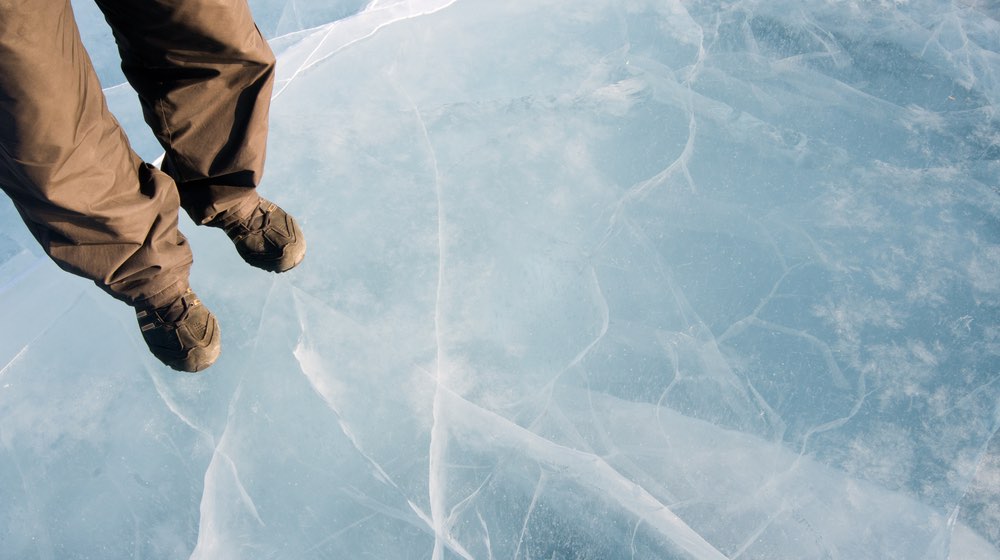
There is a reason why the idiomatic expression walking on thin ice means being in danger. To walk on ice is quite dangerous. To prevent falling and slipping during the winter season, special attention is needed especially when walking on ice. Keep in mind these important measures for a safe winter walking and to help keep you on your feet.
RELATED: Thin Ice Ahead! How To Rescue Someone Who Has Fallen Through Ice
Lower Your Risk of Falling and Slipping When Walking on Ice | 9 Safety Tips for Winter Walking
1. Wear Appropriate Footwear
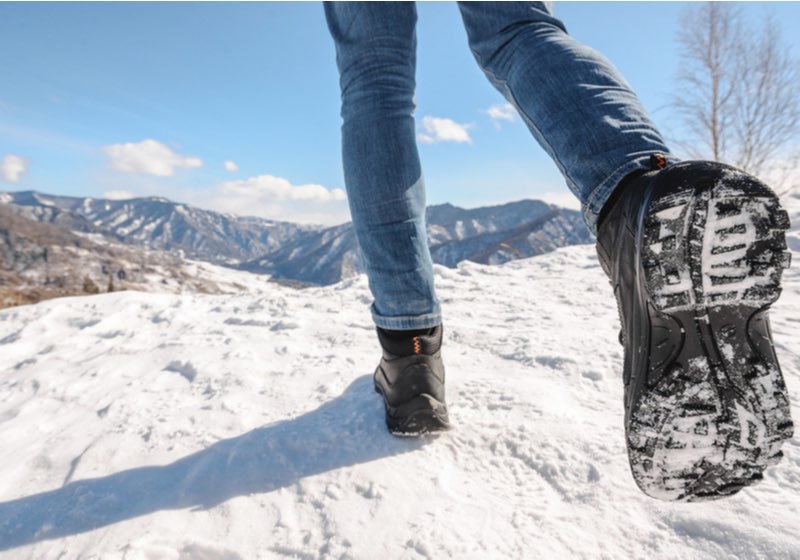
Your shoes can help reduce your risk of slipping and falling when walking on ice. For survivalists who love wearing high heels or shoes with slick leather, plastic, or smooth soles, this isn't the perfect time to be wearing them.
When walking on ice, it's recommended that you wear a pair of flat shoes or boots made of non-slip rubber, neoprene, or abrasive composite. They must fit well, and the soles must be grooved. Wearing these types of shoes can help your feet get the needed grip and keep you upright.
You might also want to consider wearing special footwear such as ice cleats or shoe grips for that extra support. However, don't forget to remove these, while sitting down, when entering your home or building. These shoes can make you slip on smooth floorings like ceramic, stone, and tile.
2. Pay Attention to the Road
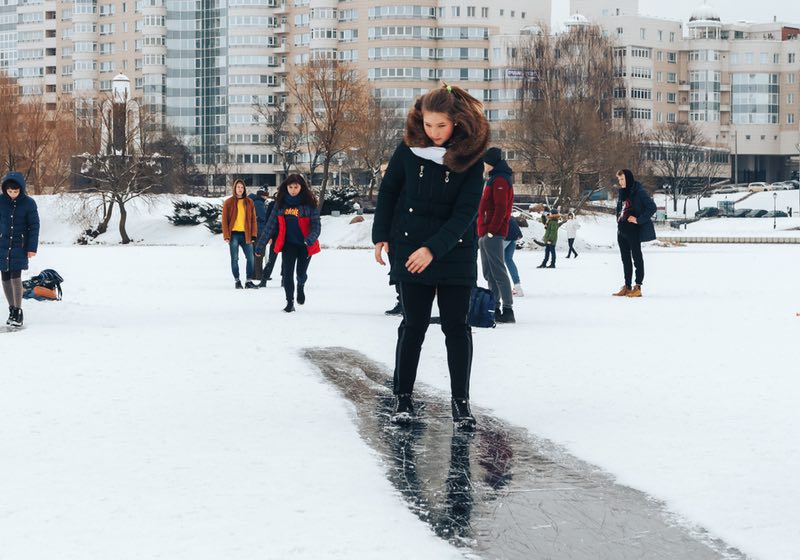
Look ahead and avoid reading, engaging in conversation, using your mobile phone, or listening to music while walking on ice. You need to stay alert and ensure that you can hear approaching traffic and other signals.
Walk consciously and decide your next step by checking icy surfaces and uneven areas. Additionally, look up every once in a while, and check for falling ice from buildings.
As you exit your vehicle, step outside before grabbing objects and retrieving your items. You might want to transfer to another parking spot if the pavement is coated with ice.
If you're walking with your babies or small children in a stroller, they must be in front of you. Position them close to the curb as you walk.
3. Avoid Taking Shortcuts
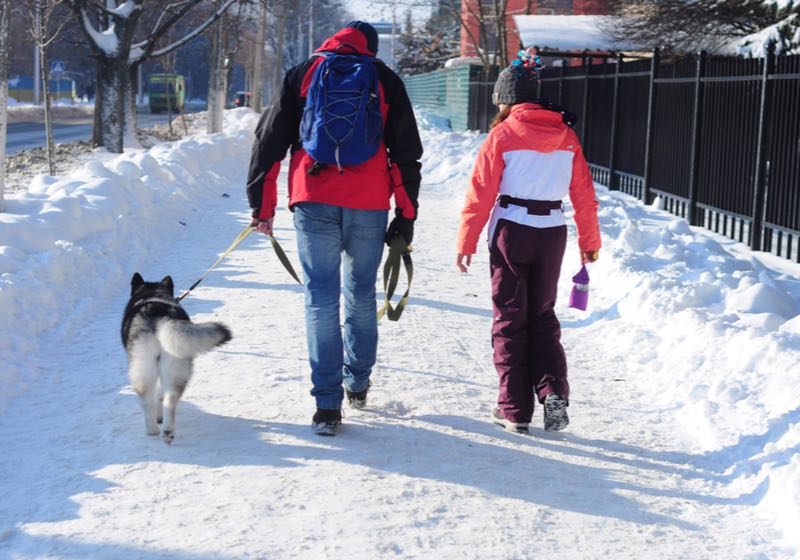 As much as you like taking shortcuts especially if you're in a rush, it may not be a good idea if there's ice on the roadway. Use designated walkways or sidewalks instead.
As much as you like taking shortcuts especially if you're in a rush, it may not be a good idea if there's ice on the roadway. Use designated walkways or sidewalks instead.
Prepare by planning and looking for the safest route of your walk. A shortcut may not be safe because most likely, its road hasn't been cleared yet of ice.
4. Look at Surfaces
Assume that all wet areas are icy and slippery. Water vapor or dew that froze on cold surfaces form a thin and almost invisible layer of ice that looks like a wet pavement. Walk deliberately, take small steps, and approach with extra caution.
Ice usually appears during the mornings so be more careful during this time of the day. Test if the area is slippery by slightly tapping your foot on the surface. You may also want to bring a small bag of sand or gravel, and spread it on icy surfaces for better traction.
When entering buildings, don't forget to check the floor as it might be wet. Step first, and rub your shoes on rugs by the doorway.
5. Be Like a Penguin When Walking on Ice

Do the penguin walk by spreading and slightly pointing your feet out. Bend your torso forward to some extent, and slightly bend your knees. Walk as flat-footed as possible while curling your toes, and put the center of your gravity on your front leg.
Remove your hands from your pockets and extend your arms to your sides. Additionally, keep in mind to take slow steps when shifting your weight. These will help maintain your balance.
RELATED: On Seriously Thin Ice: Cold Water Survival Tactics
6. Use Walking Sticks
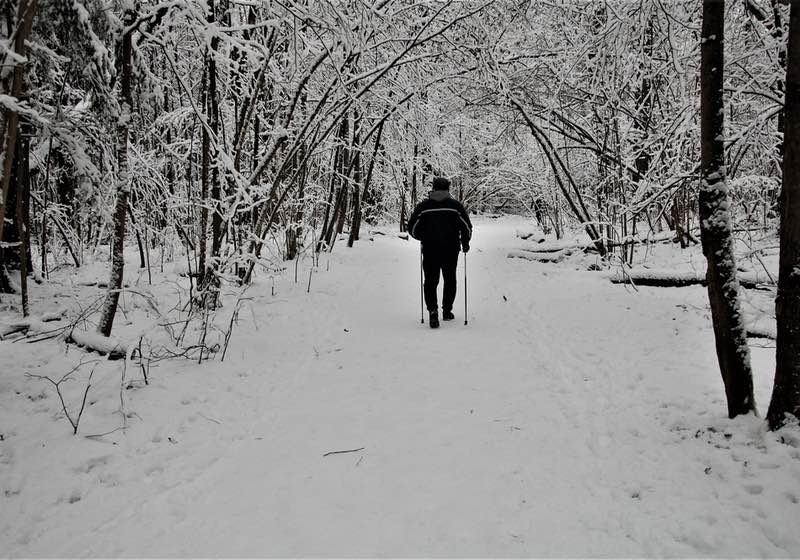
A pair of ski poles or canes can help keep your balance when walking on ice, but ensure that the height is right for you. Check the end of the cane, and make sure that it's at your wrist level when held upside down.
You can also attach a retractable ice pick onto its end for better grip. Just flip the cane back once you're on hard surfaces since it tends to be slippery in this type of area. You can also use a walker for additional care.
7. Choose Proper Clothing and Accessories
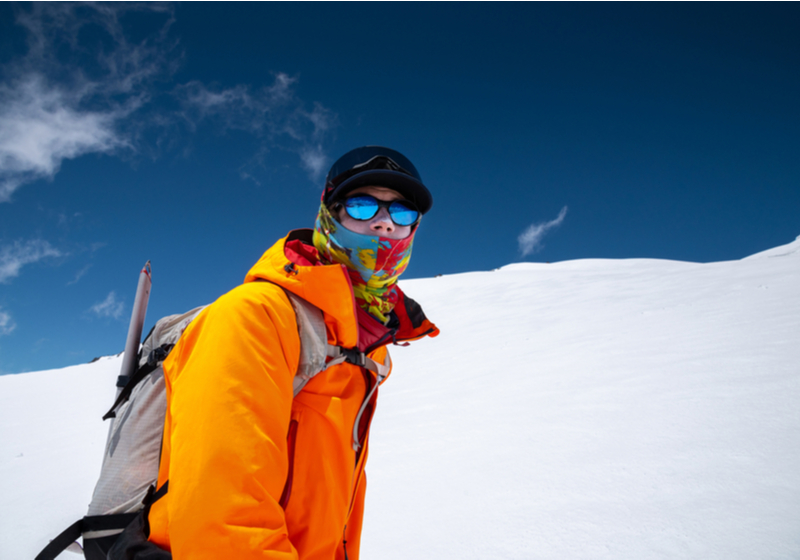
When walking on ice, it's important that you can see clearly, and you're visible to others as well. Wear sunglasses so you can see better, but be sure that they don't block your view. Additionally, they help prevent snow blindness.
If possible, avoid carrying heavy or large loads as they can lose your balance and block your vision. Use bright-colored clothes and reflective material such as a coat, scarf, or hat so other road users can easily notice you while walking.
8. Avoid Icy Stairs and Ramps
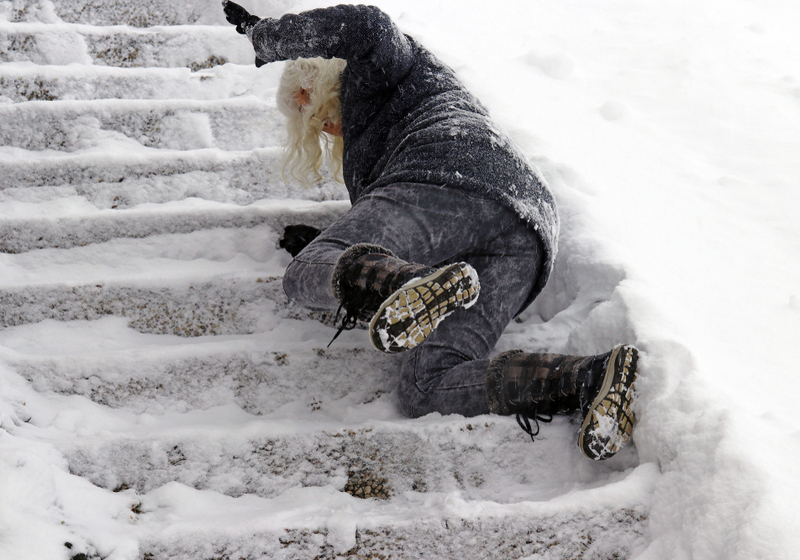
As much as possible, avoid walking on slopes since the combination of gravity and ice can make you slip or fall. However, if walking along icy stairs and inclines is unavoidable, keep in mind to climb and descend slowly. Take your time, hold on to handrails, and firmly plant your feet on each step for stability.
9. Always Be Prepared When Walking on Ice
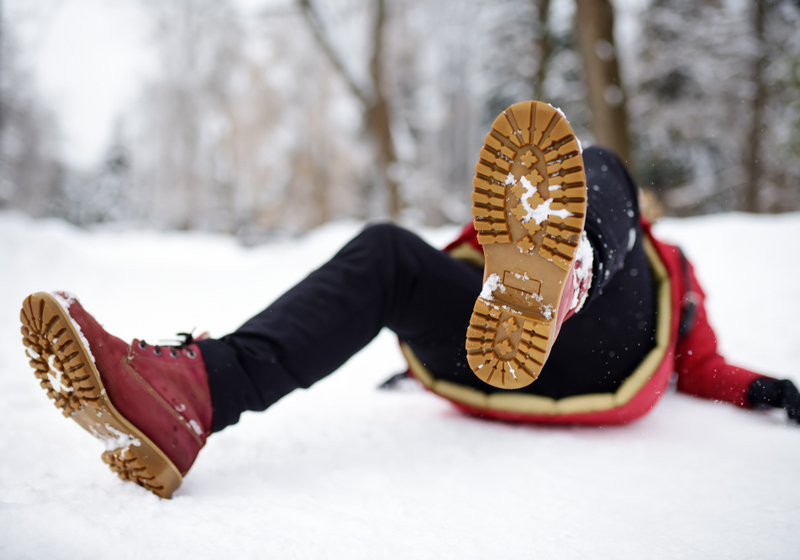
Despite being careful, falls can still occur. If these happen, do not extend your arms. Try to fall by landing on your thighs first, followed by your hips and shoulders. Make sure not to let your head hit the ice.
Additionally, you can still lessen the risk of getting an injury due to falling. If you think you're about to fall, try to roll backwards. Relax, and avoid falling forward.
Throw the objects you're carrying, and prioritize yourself instead of your items. You can also wear a bulky coat to serve as your cushion and a hip protector in case you fall.
Aside from being careful when walking on ice, you also have to know what to do in case the ice cracks apart. Watch this video by Tech Insider to learn how to survive a fall through frozen ice:
Don't be afraid to step outdoors. Appreciate the beauty of the winter season while walking on ice by following these tips for safe winter walking.
What other safety tips when walking on ice do you have in mind? Share them with us in the comments section below!
Up Next:
- Off the Grid Living: Straw and Ice Make for Good Refrigeration
- Deicer Products At Home To Survive The Freezing Weather
- Hurricane Harvey Safety Tips: Before, During and After the Storm
Calling all preppers, craftsmen, bushmasters, outdoorsmen and all around skilled people, Survival Life needs YOU! Click here if you want to write for us.
Don’t forget to stay connected with us on Facebook, Twitter, Pinterest, and Instagram!
-

 Paracord Projects1 year ago
Paracord Projects1 year agoParacord Projects | 36 Cool Paracord Ideas For Your Paracord Survival Projects
-

 Paracord Projects1 year ago
Paracord Projects1 year agoHow To Make Paracord Survival Bracelets | DIY Survival Prepping
-

 Medical Care1 year ago
Medical Care1 year ago21 Home Remedies For Toothache Pain Relief
-

 Knife Laws1 year ago
Knife Laws1 year agoAre Switchblades Legal? Knife Laws By State
-

 Do It Yourself1 year ago
Do It Yourself1 year agoSurvival DIY: How To Melt Aluminum Cans For Casting






diyandcrafts.net
January 7, 2021 at 8:34 AM
All of these ideas are more beautiful than the other.
Tim Merker
February 4, 2021 at 11:51 AM
Wear shoe chains! They coast about $40 which is lots cheaper than a broken leg. (I am not getting paid to say this, but I should because I really love shoe chains.)
Douglas S Campbell
February 4, 2021 at 11:54 AM
Exactly and weight forward while walking.
Yvonne
February 4, 2021 at 12:08 PM
The picture with the dog brings up another point. A well behaved pet can be great for 4-paw traction while a wild pet can be dangerous on slick surfaces.
buzzardtoes
February 4, 2021 at 1:19 PM
A ski pole may not be the best thing to use. Remember that ice picks are used to break ice? Perhaps a shield of some kind like rubber might allow balance assistance without the possibility of breaking the ice. Another trick not mentioned might be to use a couple of handfuls of leaves, grass, dirt or some such to provide some traction.
doug
February 4, 2021 at 1:44 PM
I don’t advise being on ice- but sometimes you have to. IF you have to spend alot of time on ice run a cord or a piece of para cord from one hand to the other THRU your jacket, with an ice pick or screw driver or something kinda sharp to use if you start going thru the ice- you can ‘plant ‘ these and stop yourself from completely submerging , and it will help you pull yourself out……….I’d still strongly recommend staying off of it though